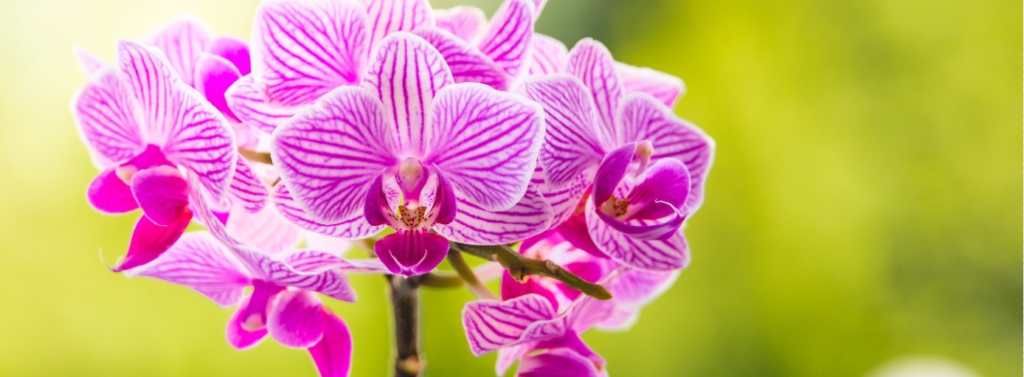

Orchids, numbering more than 35 thousand species and varieties, are found in nature in both hemispheres.
Experts divide all Orchidaceae into 3 groups: terrestrial orchids, epiphytic and saprophytic orchids. The most numerous group is considered to be epiphytes that live on trees or other plants. The most popular indoor flower, thephalaenopsis orchid, comes from Southeast Asia.
moisture- and breathable soil with an acidity pH of 6.0-8.0.
from +20 to +27°C indoors during the day, at night from +14 to +24°C.
high.
once a week.
During flowering, to achieve the splendor and brightness of flowers, it is worth using compositions with potassium and phosphorus. During rest periods, nitrogen fertilizers can be used. But with them it is important to know when to stop in order to prevent the leaves from growing too much. After transplantation, the orchid cannot be fertilized; time is needed for the plant to adapt to the new substrate. Orchids require fertilizing approximately 1-2 times a month when they are in the growth phase.
sowing seeds of early-ripening varieties in open ground – from April to May, mid-ripening and late – from April to mid-June. You can sow early varieties before winter – at the end of October or at the beginning of November. Sowing seeds for seedlings can begin in April, and seedlings are planted in open ground in May. When growing lettuce at home, sowing is done at any time.
Do not replant during flowering. This procedure should be repeated no more than once every 2-3 years.
cuttings, children, dividing the bush, seeds and bulbs.
midges, mites, aphids, scale insects, thrips, flea beetles, mealybugs.
Before transplanting, the orchid must be watered, the substrate must be loosened and the plant carefully removed. Then you need to rinse the roots with water and remove the rotten parts with pruning shears. After this, you need to let the orchid dry for about six hours, and after this time, place it in a pot, at the bottom of which a load, for example, a small stone, is placed for stability. The roots of the plant need to be straightened and the voids filled with substrate. If some roots do not settle into the pot, leave them on the surface. Then you should water the plant so that the bark sag.
The transplanted orchid is left in a shaded place for two weeks to protect it from excessive light and overheating. Orchids grow best in a cramped pot.